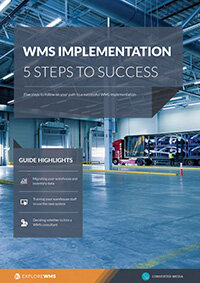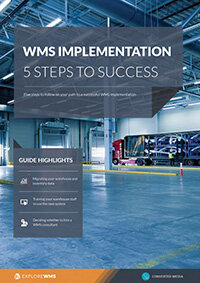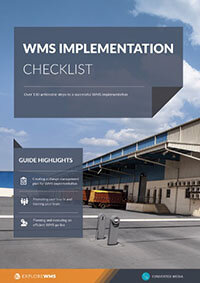A guide to change management during WMS implementation
When it comes to impending enterprise-scale change management evolutions, hosts of cultural challenges emerge almost immediately. These concerns are exacerbated when implementing complex software like WMS.
It is largely accepted that people tend to resist change due to a number of psychological issues including:
- Misunderstanding the rationale for a change
- The universal fear of the unknown
- General fear regarding the potential of learning new operational competencies
- Emotional confidence in the ‘tried and true’
- Low trust in management decision-making
- Irritation caused by a workforce ‘failure to consult’
- Poor management communication
- Disruption of routine
- Workforce exhaustion
- Turbulence triggered by organizational priority changes, whether they are associated with groups, or in the case of individuals
- Unbalanced value articulations between the level of effort versus a resulting reward
While this pick list of sensitivities appears to be fairly straightforward, note that these issues also imply the ‘management of many people’ rather than dealing with comparatively simple technological revisions.
Therefore, in order to implement your WMS successfully, action must be driven from the outset by a well-planned strategy that engages a workforce from bottom to top.
Manage your WMS implementation successfully using this step-by-step guide
Here’s how individual management elements can help create a consolidated change management plan in association with implementing a WMS:
Strategic action framework
As the old saying goes; “one can’t finish unless one starts,” and in our change management scenario, this means that enterprise leadership must first develop an overall workforce action plan. Elements associated with this research effort include:
- Current organizational charts
- Targeting and on-boarding of necessary relevant enterprise-wide stakeholders
- Identification and on-boarding of necessary project committee managers
- Establishment of necessary guidance, constraints, and/or caveats
- Establishment of necessary enterprise operational scope(s)
- Projected identification and definition of workforce and systems actions
- Detailed definitions relating to project roles and responsibilities
- Definition and development of an end-to-end change management process
- Convene and launch project committee activities
The sub-goal here is to clearly establish what, who, and how the enterprise will engage its workforce in order to support the final project goal of implementing a new WMS.
Senior management evangelism
While the change management process begins, affected senior and middle-management participants must begin engaging with the workforce rank and file.
This collaborative effort can be initiated in a number of ways:
- Formal all-hands meetings
- Divisional, department, and section meetings
- Informal “meet-and-greets” with workforce representatives
- Peer-to-peer canvassing
In this case senior and middle-management representatives should serve in as role models.
Drawing up a training plan
Once supervisory managers are at work, project committee members and operational participants should begin the development of a WMS training plan for the workforce. In this case the goal is to ensure that everyone ‘gets the memo’ when it comes to the training program, while also ensuring that any likely human resources weaknesses can be bubbled up.
Soft launch
When considering this treatise it should be expected that a parallel enterprise effort is in-work on the systems integration side of the overall WMS project scenario. Consequently, assuming that the training and technological efforts are in place a ‘soft’ or ‘training’ launch should be initiated. The goal in this case is to test and validate both the enterprise training project and its supporting technological platform in parallel with current operational tenets and systems.
Gap analysis
Once the soft launch is complete, all relevant operational participants, i.e. committee members, operational management and workforce representatives should conduct a lessons-learned round. The goal in this event is to identify and resolve any weaknesses that may cause a failure prior to a hard launch, or cut-over to next-step operations.
Hard launch
Assuming that the gap analysis and any remedial actions are successful, the workforce should embody necessary project and practical confidence, while managers up the organization’s chain should be equally clear on what will happen once a final implementation is initiated.
Granted this is a fairly simply plan structure, and depending on the scale of a particular enterprise more or fewer elements can be applied as a practical matter. Nevertheless, it should give one an ability to gain a general understanding of what will be required.
Free white paper

WMS implementation guide
Plan your WMS implementation successfully with this comprehensive guide

Featured white papers
-

-

-

WMS implementation guide
Plan your WMS implementation successfully with this comprehensive guide
Download
Related articles
-

WMS implementation guide including checklist & project plan
A guide to the entire WMS implementation process - from change management planning to go-live
-

Mission-critical features of food lot traceability software
What features of food traceability software will help you during a food recall
-

If I had known then: steps to successful WMS implementation
A guest blog from PathGuide takes us through the steps of a successful WMS implementation

